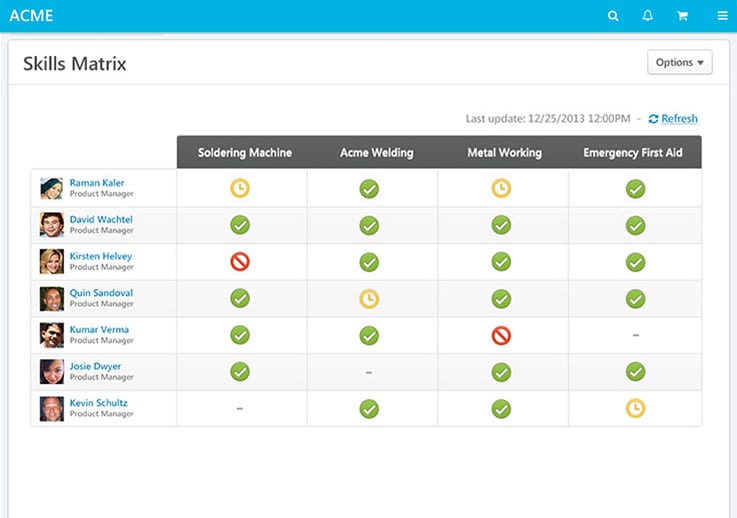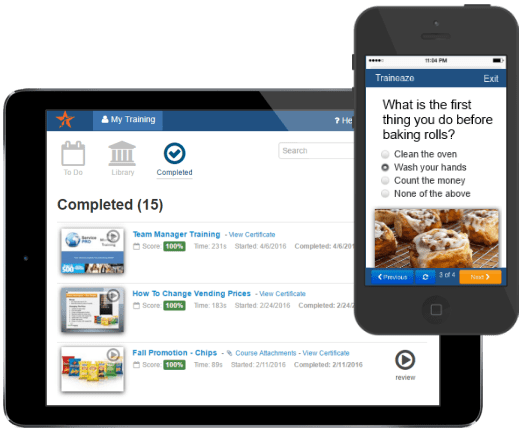Providing more frequent feedback to employees means nothing if they don't have the tools to improve at a similar pace.
Gone are the days when companies waited for annual performance reviews to let workers know how they were doing. Today, businesses increasingly spread performance management throughout the year with frequent manager check-ins and continuous feedback.
It would be insane to say this shift is a bad thing: Employees crave more feedback, after all, and Gartner found that providing more continuous feedback can improve performance by as much as 12%.
But the reality is that continuous feedback can't work without continuous learning. Employees can't improve at the same rate they're receiving feedback if they lack updated training tools and processes. Over time, continuous feedback becomes less actionable, and performance growth stagnates.
HR leaders and corporate trainers have a responsibility to give employees the tools to meet frequently changing expectations. That's why, with help from the Gartner report "Real-Time Performance Management Needs Continuous Learning," we've put together three tips on how you can promote continuous learning in your organization (full research available to Gartner clients).
Promote continuous learning in your organization with these 3 tips
1. Align training materials with competencies, not compliance
At the same time that employees are asking for more feedback, they're also asking for more guidance. They want to know what training materials your company has that can help them develop important skills and shore up glaring weaknesses.
Giving employees the means to quickly find and access training materials is vital to continuous learning (and something I'll touch on later), but so is having the right training materials in the first place.
Unfortunately, many company course catalogs are too focused on compliance (e.g., cybersecurity training, or code of conduct reviews) and not focused enough on building competencies. If you're in this boat, that's the first thing that needs to change.
But how do you know which competencies to prioritize? There are a few tools you can leverage:
Job specifications. As part of your hiring process, your company should have documented job specifications for every role, detailing the minimum requirements for the position. Use them! Find common skills needs across the company.
Skills profiles or matrices. If you have a performance management system that allows managers to build out skills profiles of their workers, that data can be incredibly helpful in deciding what training content to prioritize.
Surveys. It never hurts to ask. Have managers survey their teams to find out which skills they're most eager to develop.

An example of a skills matrix in Cornerstone Performance (Source)
2. Augment your LMS with additional tools
Learning management systems (LMSs) are designed to digitize corporate training and streamline administration. You know what they aren't designed to do? Make learning easily visible, accessible, and digestible for workers.
Where your LMS may let you down, though, other platforms that integrate with your LMS can pick up the slack, providing vital functions to support continuous learning. Here are three types of platforms you should consider implementing:
Mobile learning software
Mobile learning software can take your training materials and shrink them down to smartphone size, while also optimizing the content for mobile devices so workers don't have to frustratingly pinch-and-zoom their way around.
Want employees to do more training outside of the office? Mobile learning software is essential.
Microlearning software
Instead of pulling employees away from work to consume hours of training at a time, microlearning software allows you to break down training materials to be served to workers in 5- to 10-minute bite-sized chunks.
When contextualized to specific on-the-job needs, employees can more easily consume these micro-lessons at the moment they need them.

A microlearning course in Traineaze (Source)
Learning experience platform (LEP) software
A more recent development in the learning tech space, LEP software acts as a front-facing portal that sits atop your LMS to give learners more visibility and organization options with your training content.
Along with personalized learning paths that automatically recommend the most relevant content to each user, LEPs also allow workers to easily share training materials they like with one another and contribute their own user-generated content (UGC).
3. Break down silos between performance, learning, and succession planning
As continuous feedback becomes more popular, once-siloed talent management processes have begun to blur together and overlap. In your own organization, you've likely noticed that performance reviews, employee learning and development, and succession planning don't happen sequentially, but simultaneously. These processes are blurring together in software too.
Instead of fighting this change, embrace it. By tightly aligning these processes and approaching employee development holistically, your employee experience improves, and you'll be better able to support continuous learning.
What does this look like in practice? For one, it could mean implementing a more comprehensive talent management suite where applications for performance, learning, and succession planning intertwine more closely. It could also mean working with managers to better align individual performance metrics with overall business objectives and promotion tracks.
Admittedly, this will look different from organization to organization, but the mentality is the same: New frameworks for assessing and developing workers that are agile and interconnected will become vital to meeting the needs of employees, managers, and the business.
Eager to learn more?
Transitioning from infrequent compliance training to a culture of continuous learning doesn't happen overnight. But if you've already implemented a system to deliver more continuous feedback, you owe it to your workers to give them the tools and support that will allow them to meet these expectations.